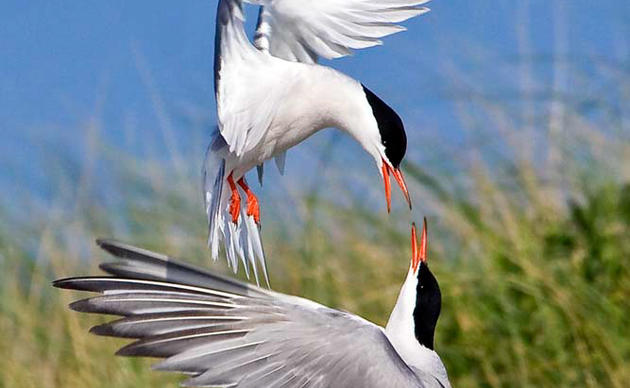Trumpeter Swan
Threatened with extinction only a few decades ago, the regal Trumpeter Swan has made a remarkable comeback. Part of that comeback is due to successful efforts by conservationists to establish Trumpeter Swan populations in the Great Lakes area where it had been eliminated by hunting long ago. Audubon's climate model projects a 100 percent loss of current summer range by 2080, with the species disappearing from core areas in Alaska. Meanwhile, the winter range is projected to shift drastically north. The eastern populations, which are expanding at a rapid pace, are probably still too new to be accurately accounted for by the model (especially when competition with the nonnative Mute Swan is taken into account).
 Each map is a visual guide to where a particular bird species may find the climate conditions it needs to survive in the future. We call this the bird's "climatic range."
Each map is a visual guide to where a particular bird species may find the climate conditions it needs to survive in the future. We call this the bird's "climatic range."
The colors indicate the season in which the bird may find suitable conditions-- blue for winter, yellow for summer (breeding), and green for where they overlap (indicating their presence year-round). The darker the shaded area, the more likely it is the bird species will find suitable climate conditions to survive there.
The outline of the approximate current range for each season remains fixed in each frame, allowing you to compare how the range will expand, contract, or shift in the future. The first frame of the animation shows where the bird can find a suitable climate today (based on data from 2000).
The next three frames predict where this bird's suitable climate may shift in the future--one frame each for 2020, 2050, and 2080.
Additional Resources
[doc:225546|link:Minnesota Breeding Bird Atlas Map - Trumpeter Swan] PDF
[doc:225581|link:Minnesota Stewardship Bird - Trumpeter Swan] PDF
How you can help, right now
Donate to Audubon
Help secure the future for birds at risk from climate change, habitat loss and other threats. Your support will power our science, education, advocacy and on-the-ground conservation efforts.
YOU can be a community scientist!
You can volunteer with Audubon Minnesota and help support birds.




